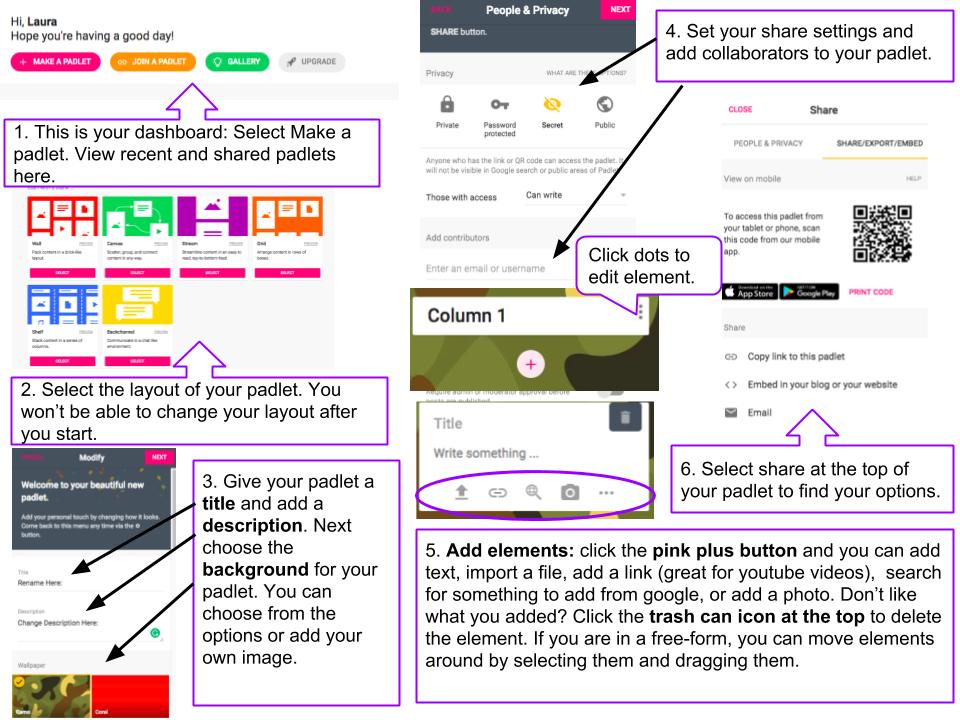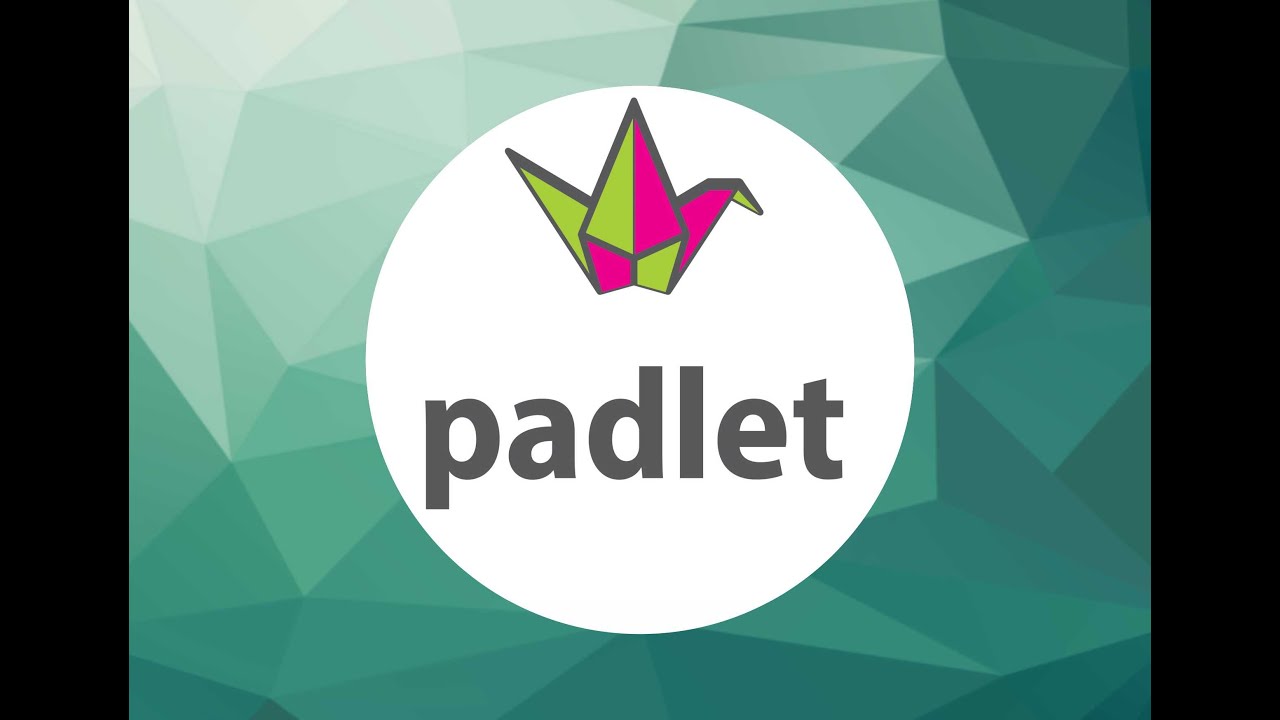

Not simple steps like creating an account, and then making your first board and posts.
CLASS PADLET HOW TO
How to Use ItĪs when provided with any powerful new tool, it can be difficult to figure out how to best use it. If your students want to share a studying playlist from spotify, they can just drop in the link and padlet will allow users to click the post and listen from padlet.
CLASS PADLET FULL
Padlet will create a post with a preview that users can click to access the full document. Want to share a Word document with your students? Just drag it over to your padlet and drop it in.

Padlet also supports multiple file types. You can even set permissions on the board, setting it to read-only when you only want to pass on information, and read/write when you want to invite collaboration.

You can create a public board that everyone can see, or create a password-protected board. Padlet allows you to create different permission settings for your boards. Of course, if you want to create a padlet for your class or institution, you don’t have to do so individually. While Google Keep allows you to share individual notes from your board with other users, Padlet allows you to create and share multiple padlets. That’s where the similarities end, however. You have a “board” where you can keep notes. If you’ve ever used Google Keep, you’ll be familiar with the concept of Padlet. Most of the time, a few alpha personalities will lead the conversation, and others’ additions get lost.Ĭreating a John Nash style wall where all users could post tips, thoughts, and useful information in an online environment could be the solution made possible by using Padlet. While forums or chat rooms are available, the linear and conversational structure doesn’t lend itself to true, collaborative brainstorming. When creating e-Learning courses, one of the most difficult aspects of the traditional classroom to recreate is the collaborative approach to assignments. And, as the director surely intended, we’re all left with a single thought: that mosaic of interconnected information was pretty darned impressive.

As if seeing the shed allowed her to see the state of his mind, John crumbles in front of her, his schizophrenia flaring in a dramatic scene that ends with her running from the house, clutching their baby. In a panic, she rushes inside to confront John, played by Russell Crowe. In horror, she sees that John has plastered the walls of the shed with newspaper and magazine clippings, all chaotically connected with a seemingly haphazard web of yarn and thumbtacks. This served as a record for students wanting to revise.In the climactic scene of 2001’s “A Beautiful Mind,” Alicia Nash, played by Jennifer Connelly, trepidatiously pushes open the creaky door to the garden shed sitting behind the house she shares with her husband, John. In addition there was a class Padlet space where the collaborative tasks were completed, recorded and stored. The solutionĪs well as the weekly Blackboard content folders, there was a weekly email with a reminder of that week’s topic and tasks sent out at the beginning of the new teaching week.Ī timeline format in Padlet was used to break down and sequence student learning. The importance of having very clear and structured Bb site but also regular communications with students is fundamental. I needed to provide a clear course structure and guide the students through the module while working online. In an online context, the first and primary form of access is via the VLE and the importance of guiding the student through the lifespan of the course is not less essential (if not more) than in face to face classes. Taught lectures serve to provide learning materials to students but also to guide them through the course and various tasks that the course unit lead has prepared. In on-campus teaching the first and primary way how students access the content of the course is by attending on-campus lectures.


 0 kommentar(er)
0 kommentar(er)
